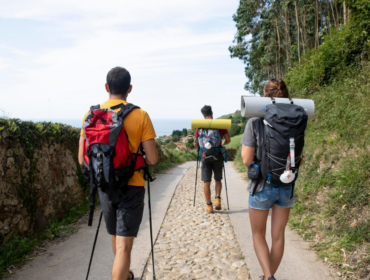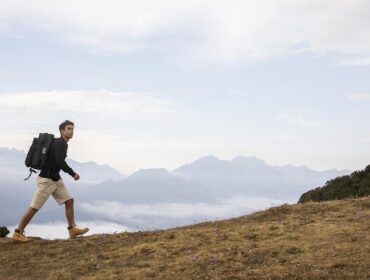Are you an avid hiker, trekker, or camping enthusiast looking to extend your outdoor adventures into the winter months? Or perhaps you’re an adventure sports enthusiast seeking a new challenge? Look no further than snowshoeing! This exhilarating winter activity allows you to explore snow-covered landscapes with ease, opening up a whole new world of winter wilderness experiences. In this comprehensive snowshoeing guide, we’ll cover everything you need to know about snowshoeing, from the basics to advanced techniques, and help you choose the perfect snowshoes for your adventures.
Introduction
Snowshoeing is a winter sport that has been around for thousands of years, originally used by indigenous peoples for efficient winter travel. Today, it has evolved into a popular recreational activity that combines the simplicity of hiking with the magic of winter landscapes. Whether you’re looking for a peaceful nature walk or an intense cardio workout, snowshoeing offers something for everyone.
What is a Snowshoe?
At its core, a snowshoe is a type of footwear designed to distribute your weight over a larger surface area, allowing you to “float” on top of the snow rather than sinking into it. This design enables you to traverse snow-covered terrain with greater ease and efficiency than you would with regular boots.
Modern snowshoes come in various shapes and sizes, each tailored to specific uses and snow conditions. For instance, the Montane Series Snowshoe is an excellent all-around option for beginners and intermediate users alike, offering a balance of flotation and maneuverability.

Material and Difference
Snowshoes have come a long way from their traditional wooden frames and rawhide lacings. Today’s snowshoes are typically made from lightweight, durable materials such as aluminum or composite plastics. These materials offer superior strength-to-weight ratios, making them easier to maneuver and less fatiguing over long distances.
The frame of the snowshoe is usually made of aluminum, like in the Treeline Snowshoes for Women. Aluminum frames are lightweight, strong, and provide excellent flotation in deep snow. The decking, which fills the frame and provides the surface area for flotation, is often made of synthetic materials like nylon or polyurethane. These materials are durable, flexible, and shed snow effectively.
Some advanced models, like the Helium-MTN Snowshoes, use composite materials for both the frame and decking. These ultra-lightweight snowshoes are perfect for those looking to move fast in the backcountry.
The main differences between snowshoe models lie in their intended use:
- Recreational snowshoes: These are designed for flat to rolling terrain and are ideal for beginners. The Treeline Snowshoe is a great example of this category.
- Backcountry snowshoes: Built for more challenging terrain and deeper snow, these snowshoes often have more aggressive crampons and bindings. The Mountaineer Snowshoes for Men are perfect for those venturing into more rugged landscapes.
- Racing snowshoes: These are streamlined and ultra-lightweight, designed for running on packed snow. While not covered in our product list, they’re worth mentioning for those interested in snowshoe racing.
Movement and Techniques
Snowshoeing is often described as an activity that’s easy to learn but takes time to master. Here are some basic techniques to get you started:
- Basic walking: Start with a wider stance than normal to accommodate the width of the snowshoes. Walk with a slight rolling motion, lifting your foot and snowshoe together, then planting it down firmly.
- Turning: To make sharp turns, use the step turn method. Lift your foot and rotate it in the direction you want to turn, then bring your other foot around to meet it.
- Climbing: When going uphill, use the toe or instep crampons to dig into the snow. On steep slopes, kick the front of your snowshoe into the snow to create a step.
- Descending: Keep your knees slightly bent and your weight back. Take shorter steps and plant your heel first to use the snowshoe’s tail for braking.
- Traversing: When moving across a slope, kick the uphill edge of your snowshoes into the slope for better grip.
For added stability and balance, especially on uneven terrain, consider using poles. The Trail Walking Lockjaw 2 Piece Poles are adjustable and provide excellent support for snowshoeing.
As you become more comfortable with these basic techniques, you can start to experiment with different stride lengths and speeds to find what works best for you in various snow conditions.
Products to Keep in Mind
When choosing snowshoes, consider factors like your weight (including gear), the type of terrain you’ll be traversing, and the snow conditions you’re likely to encounter. Here are some top picks for different user groups:
Men:
- Panoramic Snowshoes for Men (Pair): These offer excellent flotation and traction for a variety of terrains.
- Mountaineer Snowshoes for Men: Ideal for more challenging backcountry adventures.
- Flex STP 24 Snowshoes for Men: A versatile option suitable for both groomed trails and off-trail exploration.
For Women:
- Treeline Snowshoes for Women: Perfect for beginners and intermediate users on moderate terrain.
- Mountaineer Snowshoes for Women: Designed to handle rugged backcountry conditions.
- Frontier Snowshoes for Women: A great all-around snowshoe for various snow conditions.
Youth:
- Flex Jr. Snowshoes for Boys: Designed to grow with young snowshoers, these are perfect for introducing kids to the sport.
- Penguin Molded Snowshoe Kit for Youth: A fun and easy-to-use option for children just starting out.
For more advanced users or those looking to upgrade their gear:
- Lightning Ascent Snowshoes: These offer superior traction and stability for challenging terrain.
- Advanced Float Snowshoes for Women: Designed for optimal flotation in deep powder.
- Advanced Snowshoes for Men: Engineered for technical terrain and long backcountry expeditions.
Don’t forget about accessories! The HyperLink Replacement Straps and Snowshoe Strap Kit are essential for maintaining your snowshoes and ensuring a secure fit.

Snowshoeing Guide to Good Quality Shoes
Investing in high-quality snowshoes is crucial for several reasons:
- Safety: Good snowshoes provide better traction and stability, reducing the risk of slips and falls in challenging terrain.
- Comfort: Well-designed snowshoes distribute your weight more effectively, reducing fatigue and allowing you to snowshoe for longer periods.
- Durability: High-quality materials and construction mean your snowshoes will last longer, even with frequent use in harsh conditions.
- Performance: Better snowshoes allow you to tackle more challenging terrain and deeper snow, expanding your winter adventure possibilities.
- Enjoyment: When you have the right gear, you can focus on enjoying the experience rather than struggling with equipment issues.
Consider the Sherpa Snowshoe Kit or the Frame Aluminum Snowshoe Kit for Men if you’re looking for a complete set-up that includes high-quality snowshoes and essential accessories.
Conclusion
Snowshoeing is an accessible, enjoyable, and rewarding winter activity that opens up a world of snowy adventures. With the right techniques and equipment, you’ll be able to explore winter wonderlands with confidence and ease. Remember to start with easier trails and gradually work your way up to more challenging terrain as you build your skills and confidence.
Whether you’re a solo adventurer or planning family outings, there’s a perfect snowshoe for everyone. From the versatile Montane Series Snowshoe to the women-specific Advanced Float Snowshoe Kit for Women, or the youth-friendly Penguin Molded Snowshoe Kit for Youth, you’re sure to find the right fit for your winter explorations.





